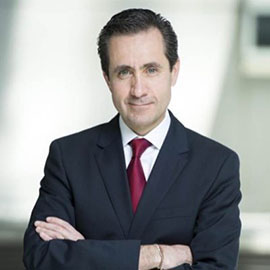By Jorge Familiar
World Bank Vice President for Latin America and the Caribbean
On a recent trip to Latin America I met Marco Gómez, an inspiring young entrepreneur from Costa Rica who studied aerospace engineering abroad on a scholarship. After graduating, he returned home and co-founded the Space Systems Laboratory of the Technological Institute. On April 2, 2018, the lab launched the first Central American satellite into space to monitor climate change. This remarkable achievement was possible because a young Latin American pursued his dreams, something he could do because of the human capital he accumulated from the day he was born. Marco had the opportunity.
Human capital has long been recognized as key for countries to enhance the productivity and growth needed to end poverty. After all, poverty reduction is about creating jobs and making sure those jobs pay good salaries. And this can’t be done without an educated and healthy workforce that can compete in an increasingly globalized economy and respond to the changing nature of work and new technologies.
Physical capital is relatively easy to measure, but human capital is not. That’s why the World Bank has been working to synthesize in a single index the health and educational conditions that most affect the productivity of each country. The result is the first edition of the Human Capital Index, which was launched during the 2018 Annual Meetings of the International Monetary Fund and the World Bank Group held in October in Bali. The index ranks each country by its human capital, a tool to monitor progress and to help focus efforts on the most relevant dimensions of human capital.
What does the index tell us about Latin America and the Caribbean? The good news is that, with a few exceptions, the region does well in terms of health. Our countries stand out in a fair share of the wellbeing dimensions measured by the index, including survival to age five, adult survival rates, and infant malnutrition.
Even so, much more still needs to be done to improve the quality of education. In nearly all Caribbean and Latin American countries, while the dropout rate is low, children underperform on standardized tests. They are in school, but they are not learning, dragging down the average index score for the region.
What’s more, there’s a wide disparity in the ranking between countries with similar income levels because of the quality of education. Panama has a similar income level as Uruguay, but it is significantly lower in the index because of its educational results.
For many, this message comes as no surprise. Latin America and the Caribbean must face the fact that it is educating young people of the 21st century in 20th-century schools with 19th-century educational systems. This is a call to action: the jobs of tomorrow will demand new and more sophisticated skills.
Progress is within our reach, but it is not about spending more, it’s about spending better — and that is especially so when taking into account the low growth and difficult fiscal situations that many countries face.
Educational spending has grown a lot over the past two decades and now accounts for the greatest share of public spending. However, the lack of better educational results suggests that this spending hasn’t been very efficient. Before increasing spending, countries must seriously rethink their educational strategies.
All of Latin America and the Caribbean must aim higher. Our young people can reach this future if given the opportunity. Marco Gómez’s story should not be the exception; it can and should be what we expect. It is about providing the opportunities. The youth will take care of the rest.

